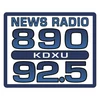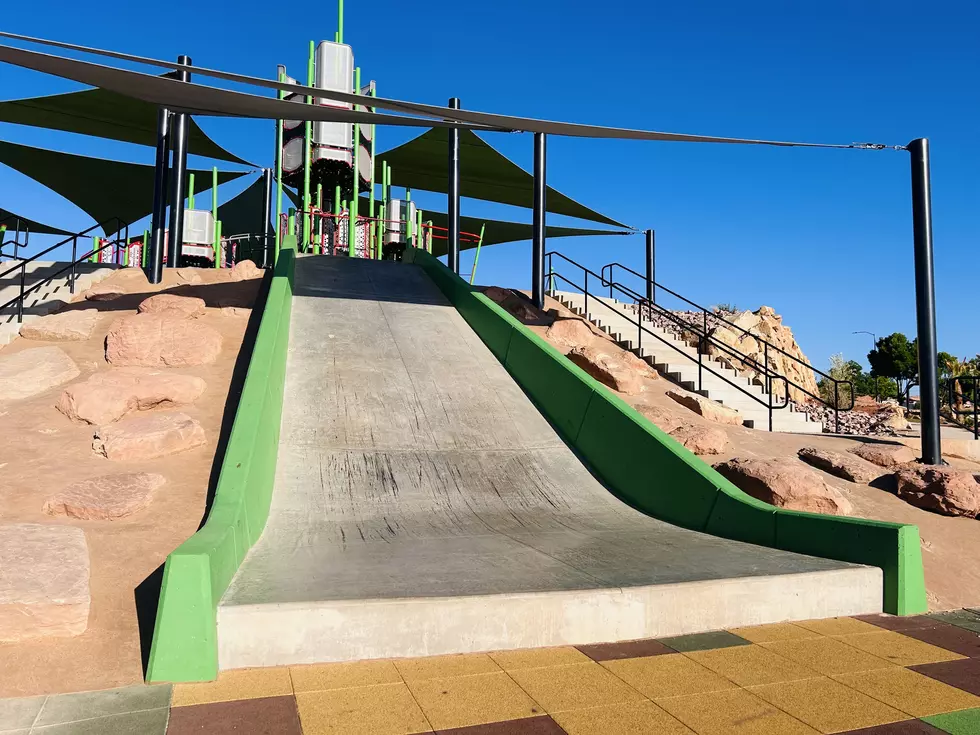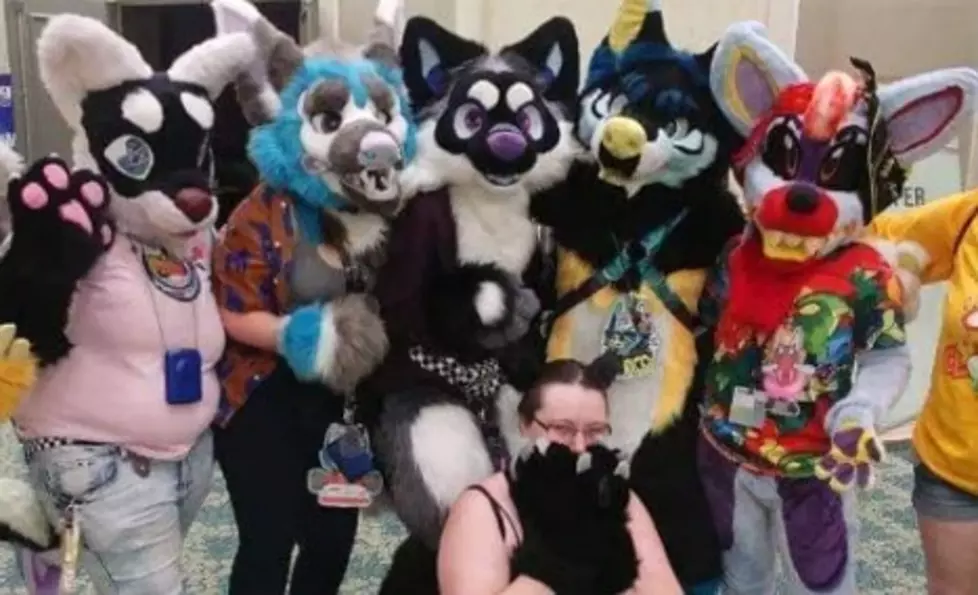
So Thirsty … Will Southern Utah Have Enough Water To Survive?
Zach Renstrom does a lot of worrying --- so we don't have to.
Renstrom, the general manager of the Washington County Water Conservancy District, knows his job is perhaps the most critical job in this desert county and he and his staff have put together a plan so that Southern Utah will have water 20 years from now and beyond.
"I think about it constantly," said Renstrom on his monthly visit to the Andy Griffin Show. "I think about it when I'm out running, up on the trails. It's something I'm never not thinking about."
The "It" he thinks about is the unquenchable thirst Washington County has for water. The high desert has blossomed with trees, grass and humans, and the need for water is relentless.
So Renstrom and his staff recently presented a 20-year plan to officials of the county and local cities, including local mayors, county commissioners and city councils.
In the plan, Renstrom, lays out for the local leaders how Washington County can continue to be sated in this time of tremendous growth. He listed several key areas:
- Water conservation -- Amazingly, even with the extreme growth in recent times, conservation has made up for the new population so the net water usage has not gone up. In addition, the county is offering cash rebates for homeowners who swap out grass for more desert friendly landscaping, and new houses have strict grass requirements.
- Regional reuse system -- Through the construction of new treatment facilities, pipelines, and storage reservoirs (like the potential Warner valley Reservoir) to capture reuse water and put it to use for agricultural and irrigation purposes, freeing up water for drinking. Renstrom says the reuse systems will provide extremely clean water.
- Potable water development projects -- These projects include the new Toquer Reservoir, expansion of the Sullivan/Cottom Wells, Cove Reservoir in Kane County, redevelopment of the Ence Wells, and a well in Diamond Valley.
- Municipal groundwater optimization -- Renstrom said many cities aren't using all their water rights -- potential wells and aquifers that could lead to a bounty of new water.
- Agricultural conversion -- As farmers decide to sell their land for development, Renstrom said the County could buy the water rights from these farmers and ranchers.
Most of us don't spend much time thinking about water and where it comes from, but Renstrom knows that water is the lifeblood that keeps Dixie pumping.

St. George City Council Candidates To Debate Nov. 1 At Utah Tech
In collaboration with community partners, Utah Tech University’s Institute of Politics is set to host a St. George City Council debate as well as a forum featuring the two major party candidates for the open seat in U.S. Congress in Utah's Second District.
Sponsored by the Washington County Debate Coalition, the St. George City Council debate will be held at 6:30 p.m. on Nov. 1 in the Mainstage Theatre of Eccles Fine Arts Center on the Utah Tech campus. A candidate meet and greet will precede the debate at 6 p.m.
The following week, the Institute of Politics will partner with the St. George Area Chamber of Commerce to host the congressional forum at 6:30 p.m. on Nov. 7 in the M.K. Cox Performing Arts Center, also on the Utah Tech campus.
Both events, which are being held ahead of Washington County’s Nov. 21 Special and Municipal General Election, are open to the community and free to attend.
Three seats are open for the St. George City Council, and candidates for the positions include Brad Bennett, Jimmie B. Hughes, Steve Kemp, Dannielle Larkin and Paula Smith. The Washington County Debate Coalition, which is comprised of Utah Tech’s Institute of Politics, local media companies, the major political parties, interest groups and local academics, is sponsoring the debate to help inform local voters.
“When we first started the coalition, with help from all of our members, my desire was to bring spirited debate to Washington County,” said Vince Brown, chair of the Washington County Debate Coalition. “We want our voters to be as informed as possible when making their voting decisions. Several years later, it thrills me to see these debates as a staple of political life in Washington County.”
Across campus the following week, Celeste Maloy (R) and Kathleen Riebe (D), who are running for Utah's Second District congressional seat vacated by Congressman Chris Stewart, will participate in a forum.
“We are excited for a forum to be held in Southern Utah,” said Lesa Sandberg, Washington County Republican Party chairperson. “In Congressional District 2, Washington County represents nearly one-third of the voters eligible to vote in this special election. It is highly likely that we will be the deciding factor in the race. We are glad that the candidates recognize the importance of education and campaigning to voters in our area. We are pleased to welcome Republican Candidate Celeste Maloy back to St. George, where she resided prior to serving with Congressman Chris Stewart the last four years. Celeste has the experience, knowledge and service record to represent Southern Utah and CD2!”
Held in a discussion format, the forum will be moderated by Brown, who will have one-on-one conversations with each candidate about the issues that matter to the residents of Southern Utah. He also will solicit questions from the public.
“Get ready, Utah! We are extremely excited to attend an upcoming forum featuring Kathleen Riebe, candidate for Congressional District 2,” Chuck Goode, Washington County Democratic Party chairperson, said. “With a proven track record in the Utah State Senate and a relentless dedication to education and community growth, Kathleen Riebe is ready to take her passion and determination to the national stage.”

Grown-up Trick-or-Treating? Yep, It's A Thing (You Should Try It)
Every year, Santa Clara's Travis and Sandy put on Monster Mash or Werewolves of London, dress up in full costumes and head out for some grown-up Trick-or-Treating.
Sandy, who grew up in the 1980s, said it is fun, exciting and helps her feel young again. She said she remembers a time when going around the neighborhood was innocent, there were no worries about predators or drugged candy and everyone was happy to enjoy the harmless fun of Halloween.
That's why Sandy and her husband do it today, with a few little wrinkles.
- Instead of asking for candy, the couple brings treat bags to their neighbors.
- They're always ready to do a trick -- usually a song or dance or even a silly skit. Their neighbors have come to expect the "trick" and usually ask for it by name. Even with the trick, neighbors still get the treat. It's Trick-and-Treat.
- Sandy usually wears something cute or funny, but Travis loves to go the scary route. He's dressed as the headless horseman, a zombie and a killer clown. Last year, Travis donned the Freddy Kreuger look.
- One year, Sandy and Travis's neighborhood agreed to do an ice cream Trick-or-Treat After the kids were back safe, all the adults walked around the neighborhood with waffle cones and collected scoops from their friends.
- When it gets later in the evening, the couple changes their modus operandi, turning into Service Demons, opting to clean up people's yards, trim their hedges or sweep their sidewalks. The real thrill, says Sandy, is to not get caught.
- At the end of the evening, they'll make sure to have as many neighbors as are interested over for chili dogs (homemade chili, of course), cheese plates and fairy cakes (fancy cupcakes).
"Who says you have to stop having fun just because you're all grown up," Sandy said.
Because Sandy is a breast cancer survivor and October is Breast Cancer Awareness month, she said she always gives out plenty of candy and each treat bag contains a pink ribbon.

Hunters Everywhere? Not Anymore in Utah
We're just about to start the deer hunt in the state of Utah, with the general hunt running from Oct. 21 through Oct. 29 (and early-season hunt already underway).
When I first moved to this great state back in 1980 (I know, I know, I'm old), I remember riding on a school bus (I was in the ninth grade), and being from Texas, I figured I knew a little bit about wildlife and hunting.
So I started to opine about hunting facts from Texas and about 20 seconds into the conversation, I realized I was in way over my head.
It seemed that everyone in the immediate area around the seat on my bus (male or female) was a hunter. They regaled me with stories about the deer hunt and spending time in the mountains with their dads and about 6-point, 8-point and even 12-point bucks.
Pretty much every one of these kids had shot a deer, cleaned its carcass and dragged it off of the mountain.
I had done none of these things.
After back-pedaling, I came to the realization that people in Utah were serious about the deer hunt.
Over the next few years, as I progressed through high school, I learned that it was a strong Utah tradition that involved the whole family and "deer camp" up in the mountains for a week or longer.
Heck, Utah even had a "holiday" every year. It wasn't Fall Break or UEA weekend, but rather "Deer Hunt."
But things have changed.
Sure, I still know plenty of hunters and some of my best friends leave for deer hunts every year. But now we have a lottery to even get a tag and the average hunter isn't so average anymore.
Back in the 1980s, nearly 25 percent of Utahns had hunting licenses and tags were handed out (with no lottery) to thousands of men and women statewide.
But according to statewide statistics, Utah has 249,765 active hunting licenses -- just 7.9 percent of the state's population. The state has issued 73,075 tags, and while the number of total tags is up, the percentage is way down from 40 years ago.
Utah, once a hotbed of hunting, is ranked 21st on the nation for number of hunters per capita.
Still, hunting will always be a part of Utah's DNA.
“We’re really fortunate because hunting has a big heritage in Utah,” Utah Division of Wildlife Resources spokesman Faith Jolley told KSL.com.
But there's no hiding the fact that with the tremendous growth we've experienced and the aging population of our hunting demographic (60 percent of all hunters are over the age of 45), hunting may eventually be a thing of the past in Utah.
States with the most registered hunters
Gallery Credit: Meagan Drillinger
More From KDXU 890 & 92.5









